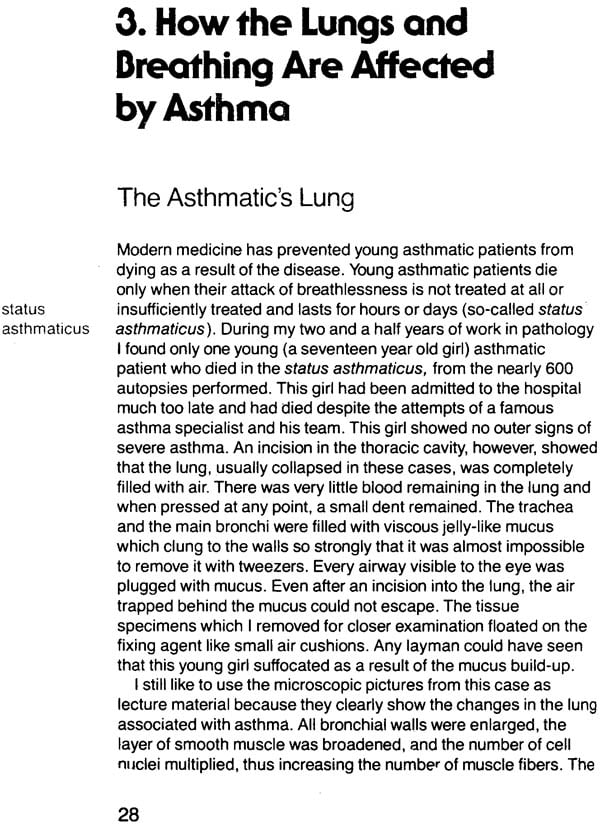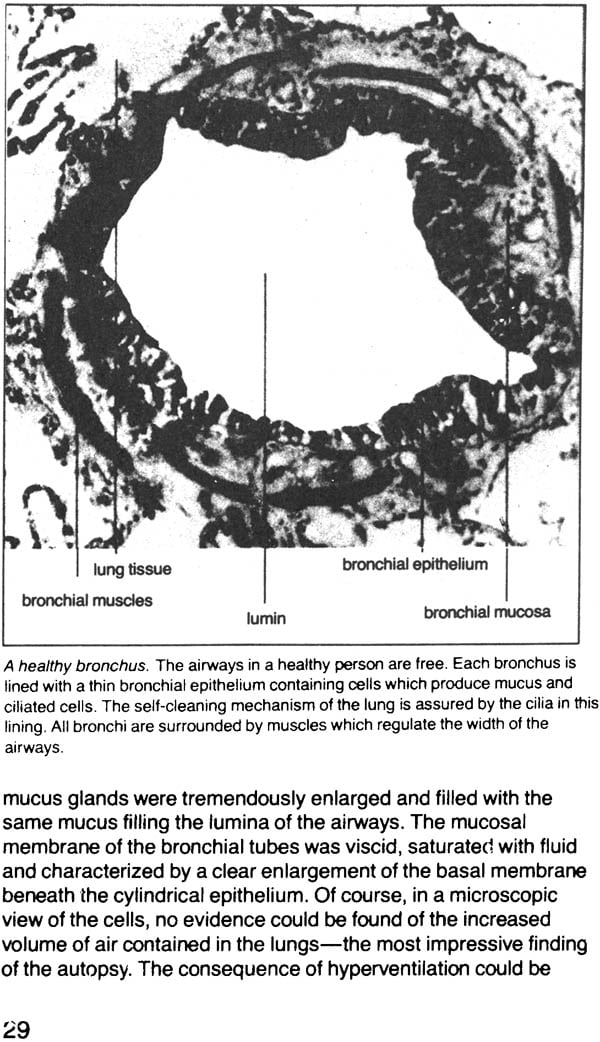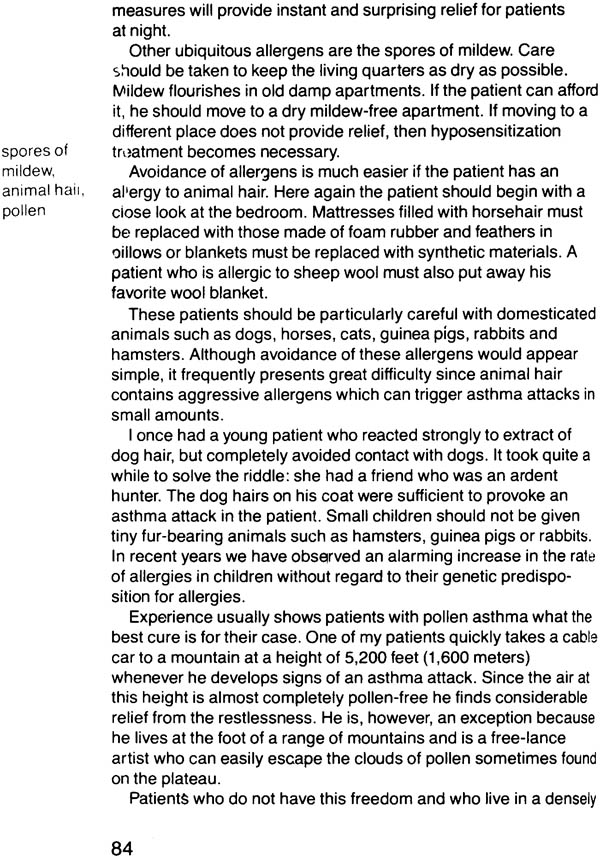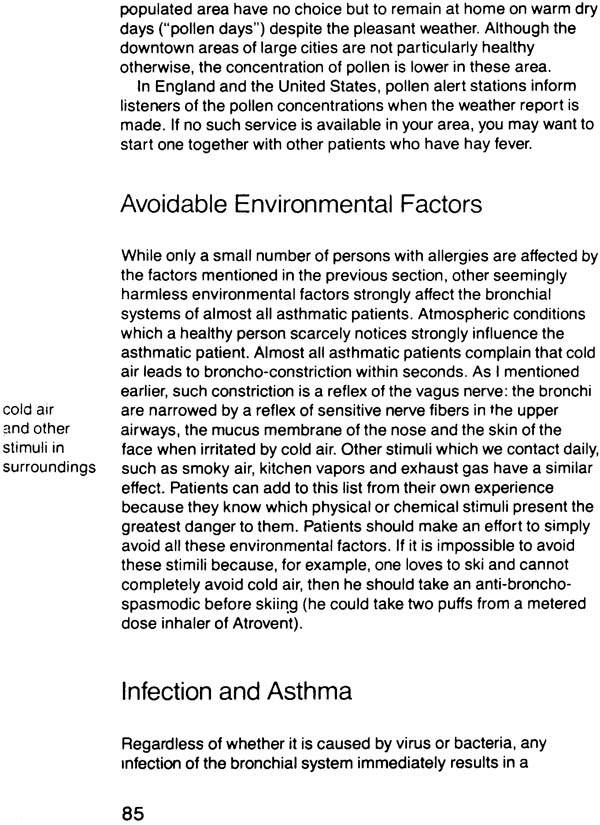
Speaking of Asthma (An Invaluable Easy-to-Follow, Concise Guide to Help You Detect and Prevent Asthmatic Attacks)
Book Specification
| Item Code: | NAM325 |
| Author: | Dietrich Nolte |
| Publisher: | Sterling Publishers Pvt. Ltd. |
| Language: | English |
| Edition: | 2012 |
| ISBN: | 9788120720572 |
| Pages: | 96 (13 B/W Illustrations) |
| Cover: | Paperback |
| Other Details | 8.5 inch x 5.5 inch |
| Weight | 130 gm |
Book Description
This book was written for those who suffer from temporary cough, expectoration or shortness of breath and for those who suffer from chronic asthma due to allergies or other factors.
Since the bronchi of asthmatic patients are hypersensitive, cold air, dust, animal hair, pollen or physical exertion are sufficient to provoke an asthma attack.
Asthmatic patients often live in fear of the next attack and worry about their ability to manage the everyday problems associated with asthma.
Daily experience in his general practice has convinced Dr. Dietrich Nolte, Chief Resident of a special clinic for respiratory diseases, that asthmatic patients must be well informed about their disease. This book is the first to offer the asthmatic patient specialised medical advice, and to explain the causes and specialised treatment methods. A patient can follow the advice of a physician only if he is well informed. If the asthmatic patient knows which factors play a decisive role in his asthma, then he can learn to control these factors and lead a better life, despite his chronic asthma.
Dietrich Nolte, M.D., Professor of Medicine, was born in Essen in 1937 and studied medicine in Munster, Vienna and Munich. Between 1963 and 1965 he specialised in pathology and physiology. In the period from 1966 to 1973, he became a specialist in internal medicine and later, also in lung diseases and allergies. He received his Ph.D. in 1970 and title of Professor in 1971 in Giessen, where he then served as Chief Resident at the University Medical Clinic until 1974.
Since 1974, he has been the Chief Resident of the Department of Internal Medicine in the City Hospital in Bad-Reichenhall which has a special clinic for respiratory diseases. Since 1977 he has been the Research Director at the Bad-Reichenhall Research Institute for Respiratory Diseases. In 1979, he was honoured with a special professorship at the Technical University of Munich.
| Why I Wrote This Book | ||
| 1 | What Is Asthma? | 9 |
| Asthma, Bronchitis and Emphysema | 10 | |
| The Frequency of Asthma | 11 | |
| Is Asthma Hereditary? | 11 | |
| 2 | Structure and Function of the Respiratory System | 13 |
| The Nose, Sinuses and Larynx | 13 | |
| The Bronchial Tubes of the Bronchial Tree | 14 | |
| The Inside of the Respiratory System | 16 | |
| Bronchial Secretion | 17 | |
| The Self-Cleaning Mechanism of the Lungs | 18 | |
| The Alveoli and Their Large Surface Area | 20 | |
| Where the Gas Exchange Takes Place | 20 | |
| Pulmonary Circulation | 21 | |
| The Lungs-a Pair of Bellows? | 23 | |
| Respiratory Muscles | 23 | |
| The Exchange of Oxygen and Carbon Dioxide | 25 | |
| The Transportation of Gases | 25 | |
| The Regulation of Breathing | 26 | |
| 3 | How the Lungs and Breathing Are Affected by Asthma | 28 |
| The Asthmatic's Lung | 28 | |
| Narrowing of the Bronchi | 31 | |
| Causes of Breathlessness | 31 | |
| Causes and Function of Cough | 32 | |
| 4 | The Causes of Asthma | 33 |
| Asthma-an Allergy? | 33 | |
| The Significance of Respiratory Infections | 36 | |
| Psychogenic Asthma? | 38 | |
| Can Drugs Precipitate Asthma Attacks? | 41 | |
| Exercise-Induced Asthma - an Unsolved Riddle | 42 | |
| Consequences of the Link Between the Nose and Bronchial System | 43 | |
| Is Asthma an Occupational Disease? | 46 | |
| The Hypersensitive Bronchial System | 46 | |
| 5 | How the Physician Makes the Diagnosis | 48 |
| The Typical Asthma Attack | 48 | |
| Breathlessness Does Not Always Indicate Asthma | 49 | |
| The Asthmatic's Bronchial Noises | 50 | |
| Significance of the Pulmonary Function Test | 51 | |
| Developments of Allergy Testing | 53 | |
| Important: Testing of the Sputum | 57 | |
| 6 | The Natural History of Asthma | 58 |
| Initiation of the Disease Process | 58 | |
| Is There a Link Between Hay Fever and Asthma? | 59 | |
| The Acute Asthma Attack | 60 | |
| Developing Chronic Asthma | 60 | |
| Acute Dangers and Late Consequences | 61 | |
| Final Stage: Congestive Heart and Pulmonary Failure | 62 | |
| 7 | What the Physician Can Do | 65 |
| Specific Hyposensitization-One Method of Effective Treatment | 65 | |
| Hyposensitization in General Practice | 66 | |
| Success of Hyposensitization | 67 | |
| Different Methods of Treatment for Infection-Induced Asthma | 68 | |
| Drugs to Help Prevent an Asthma Attack | 69 | |
| Broncho-Dilators and How They Work | 70 | |
| Sympathomimetic drugs | 71 | |
| Anticholinergic agents | 73 | |
| Theophylline (xanthine derivatives) | 75 | |
| Aerosol or Tablet? | 75 | |
| Corticosteroids: Efficacy and Side Effects | 76 | |
| After Hospital Admission | 79 | |
| Surgery for Asthma? | 80 | |
| 8 | How the Patient Can Help Himself | 83 |
| Protection from Allergens | 83 | |
| Infection and Asthma | 85 | |
| Possibilities Offered by Breathing Exercises | 86 | |
| Learn Autogenic Training | 86 | |
| Exercise and Sports | 89 | |
| Occupational Activities | 90 | |
| Where to Spend Your Vacation | 91 | |
| Are Health Spas Worthwhile? | 92 | |
| Asthma and Pregnancy | 93 | |
| Be Wary of Easy Cures | 93 | |
| 9 | Learning to Live With Asthma | 95 |
| Charts | ||
| Pollen Calendar | 35 | |
| Antigens That Induce Asthma | 44 | |
| A Questionnaire for the Asthmatic | 54 | |
| The Most Important Broncho-Dilating Drugs | 74 | |
| Breathing Exercises | 87 |









